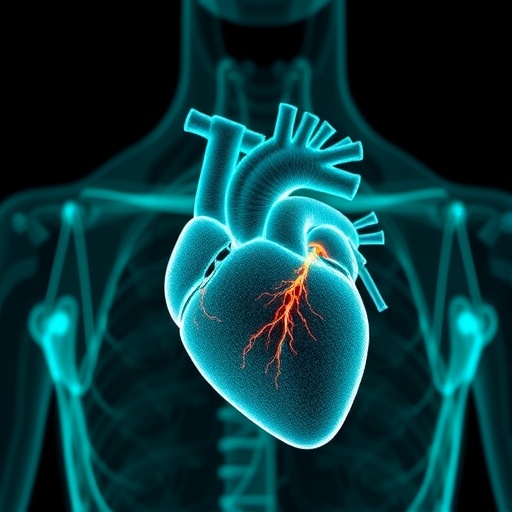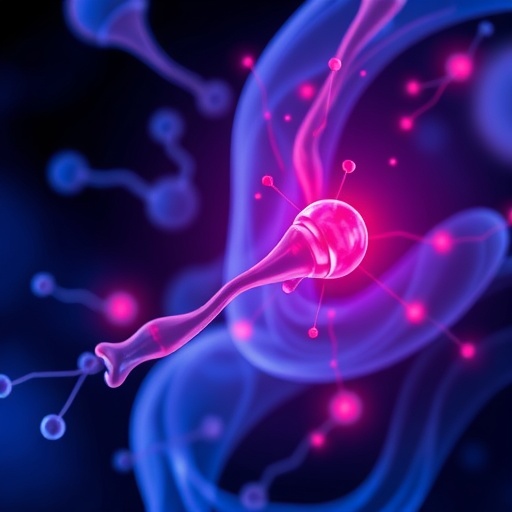In the complex world of cardiac development, one of the most compelling phenomena is the transformation of the heart’s inner architecture, particularly the process of myocardial trabeculation. This intricate remodeling is crucial for establishing a functional, robust heart capable of meeting the increasing physiological demands during embryogenesis and beyond. Recently, groundbreaking research led by Wang et al. has unveiled a novel molecular and mechanical mechanism that orchestrates the initiation of myocardial delamination, a key step underpinning the formation of trabeculae. Their study, published in Nature Communications, uncovers how mechanically triggered expression of the transcription factor snai1b coordinates this delicate process, bridging mechanical forces and genetic regulation during cardiac morphogenesis.
Trabeculation is an evolutionary conserved developmental phenomenon where the initially smooth myocardial layer undergoes complex architectural folding and delamination to form trabecular ridges within the ventricle. These trabeculae increase the surface area available for oxygen exchange before coronary circulation is fully developed and are essential for the formation of a functionally competent myocardium. Despite its critical importance, the initial molecular cues and mechano-biological signals that trigger the delamination and differentiation of myocardial cells have remained elusive. Wang and colleagues tackled this challenge by focusing on the role of the snail family transcriptional repressor snai1b, already known for its involvement in epithelial-to-mesenchymal transitions and cellular motility in other developmental contexts.
The team employed state-of-the-art live imaging and molecular manipulation techniques in zebrafish models, a system favored for its optical transparency and genetic tractability. Through these methods, they demonstrated that the activation of snai1b expression is directly influenced by mechanical forces experienced by the myocardial cells during early heartbeats. Significantly, their data show that cardiac contractility generates localized mechanical stresses that induce snai1b transcription specifically in a subset of myocardial cells destined to delaminate. This finding elegantly links the biomechanical environment of the developing heart to the nuclear genetic programs that dictate cell behavior.
In a detailed exploration of snai1b’s function, the researchers revealed that the transcription factor modulates the loss of myocardial cell adhesion and promotes apical constriction, cellular behaviors fundamental to the physical detachment of cells from the compact myocardial layer. The transcriptional repression activity of snai1b targets cadherin-mediated adherens junction components, altering the cell-cell adhesion landscape and thereby enabling cells to loosen their attachments and commence delamination. This molecular remodeling is supported by dynamic changes in the actomyosin cytoskeleton observed by the researchers, which further potentiate cell shape changes and separation.
Significantly, the study pinpoints that this process is tightly coordinated both spatially and temporally, ensuring that myocardial delamination occurs precisely where and when it is needed for optimal trabecular patterning. The authors highlight that disruption of snai1b signaling leads to profound trabeculation defects and compromised cardiac function. Such defects underscore the clinical relevance of this pathway, as aberrant trabeculation has been implicated in congenital heart diseases including left ventricular non-compaction cardiomyopathy, a malformation marked by excessive or insufficient trabeculae.
The research conducted by Wang and colleagues also advances our understanding of the molecular dialogue between mechanical cues and gene expression in cardiac morphogenesis, a growing area of interest in developmental biology. Their data suggest that mechanical forces borne from the nascent heartbeat are not merely passive consequences of cardiac function but active signals that influence gene regulation and cellular architecture changes. This paradigm shift opens avenues for therapies targeting mechano-transduction pathways that may rectify developmental heart defects.
The use of zebrafish as a model system not only enabled the visualization of these dynamic processes at single-cell resolution but also facilitated genetic manipulation that revealed causal relationships between mechanical strain, snai1b activation, and myocardial cell behavior. Importantly, these findings have high translational potential as the snail family and mechanosensitive pathways are highly conserved across vertebrates, including mammals. This cross-species relevance suggests a fundamental role for snai1b in cardiac development beyond zebrafish.
Further biochemical analyses conducted by the research team elucidated downstream effectors of snai1b signaling, identifying an intricate network of cytoskeletal regulators and cell junction molecules whose expression is modulated to effect morphological changes. These data enrich the mechanistic model by showing how a single transcription factor can orchestrate diverse cellular events necessary for tissue remodeling under mechanical constraints. Such integrative approaches combining imaging, genetics, and molecular biology underscore the multidisciplinary effort required to uncover the secrets of heart development.
In addition to advancing knowledge on embryonic cardiac development, this study’s insights may have ramifications for regenerative medicine. Understanding how mechanical stress influences transcriptional programs that drive cell delamination and differentiation could inform strategies to recapitulate these processes in vitro, enhancing efforts to engineer functional heart tissue from stem cells. Moreover, targeting snai1b or its downstream pathways might offer therapeutic potential in managing pathological conditions where myocardial architecture is disrupted.
Wang et al.’s investigation also raises provocative questions about the universality of mechanical signal integration in organogenesis. The heart, subjected to constant biomechanical forces, serves as a model for studying mechanotransduction in developmental contexts. It is conceivable that similar mechanisms operate in other organs where tissue remodeling is driven by both genetic and mechanical factors. This could herald a new era of developmental biology, emphasizing the convergence of physical forces and molecular cues.
Crucially, the study melds cutting-edge imaging with rigorous quantitative analysis, demonstrating how advancements in microscopy and computational modeling can elucidate complex biological phenomena. The methodology allowed the team to capture live developmental events in unprecedented detail and correlate them with changes in gene expression and cellular dynamics. Such technological innovation is vital for unraveling the multilayered processes governing organ morphogenesis and function.
The temporal kinetics of snai1b activation revealed by this study are especially intriguing. The precise timing of transcriptional responses to mechanical stimulation may be crucial to ensuring correct tissue patterning and avoiding dysplasia. The authors speculate that mechano-responsive gene regulation forms part of a feedback system whereby developing tissue adapts morphologically to functional demands. This concept underscores the plasticity of embryonic development and its fine-tuning by physical stimuli.
Moreover, the identification of snai1b as a mechanosensitive switch promoting myocardial delamination enriches the catalog of genes responsive to biomechanical forces in embryos and highlights potential biomarkers for the onset of trabecular formation. Such markers could prove invaluable for early diagnoses and better understanding of cardiomyopathies linked to trabeculation anomalies.
In a broader evolutionary context, the findings reveal how ancient gene regulatory networks have been co-opted and modulated by mechanical forces to sculpt increasingly complex organ structures. Snai1b’s dual role in adhesion regulation and mechanotransduction exemplifies the multifaceted strategies that cells employ to synchronize genetic instructions with environmental inputs during organ formation.
Ultimately, the study by Wang and colleagues sets a new benchmark for integrating biomechanics and genetics in cardiovascular research. By illuminating the molecular mechanisms of myocardial delamination, it paves the way for future explorations into therapeutic interventions aimed at congenital and acquired heart diseases. This research is a testament to the power of interdisciplinary science to unlock fundamental biological mysteries with profound implications for human health.
Subject of Research: Cardiovascular development focusing on myocardial trabeculation mechanism
Article Title: Mechanically activated snai1b coordinates the initiation of myocardial delamination for trabeculation
Article References:
Wang, J., Brown, A.L., Park, S.K. et al. Mechanically activated snai1b coordinates the initiation of myocardial delamination for trabeculation. Nat Commun 16, 8363 (2025). https://doi.org/10.1038/s41467-025-62285-w
Image Credits: AI Generated
Tags: cardiac development mechanismsembryonic heart morphogenesisevolutionary conserved cardiac architecturemechanical activation in heart developmentmechano-biological signaling in cardiogenesismolecular cues in heart remodelingmyocardial delamination initiationmyocardial trabeculation processNature Communications cardiac researchSnai1b transcription factor rolesurface area enhancement for oxygen exchangetrabecular ridge formation





